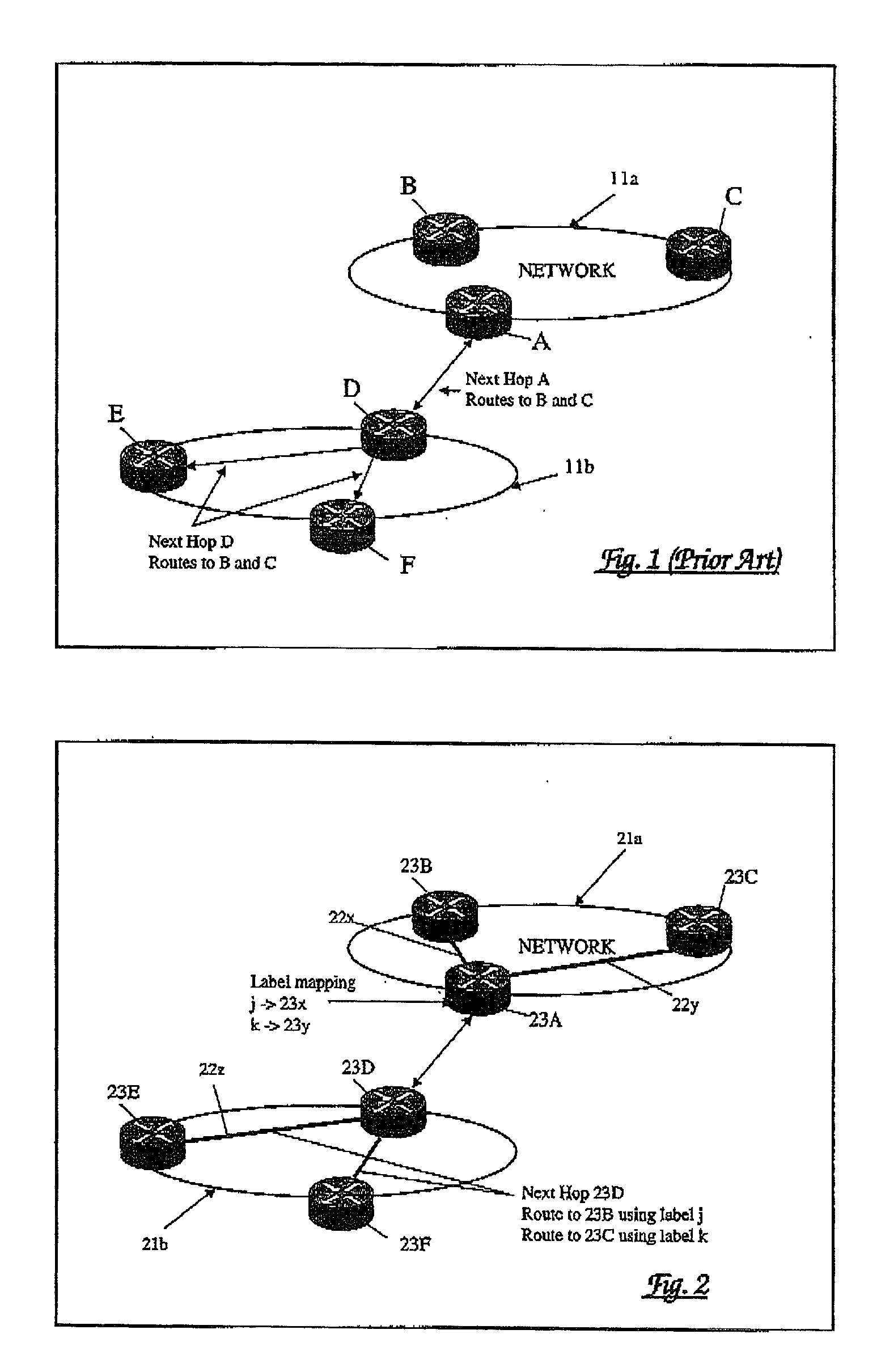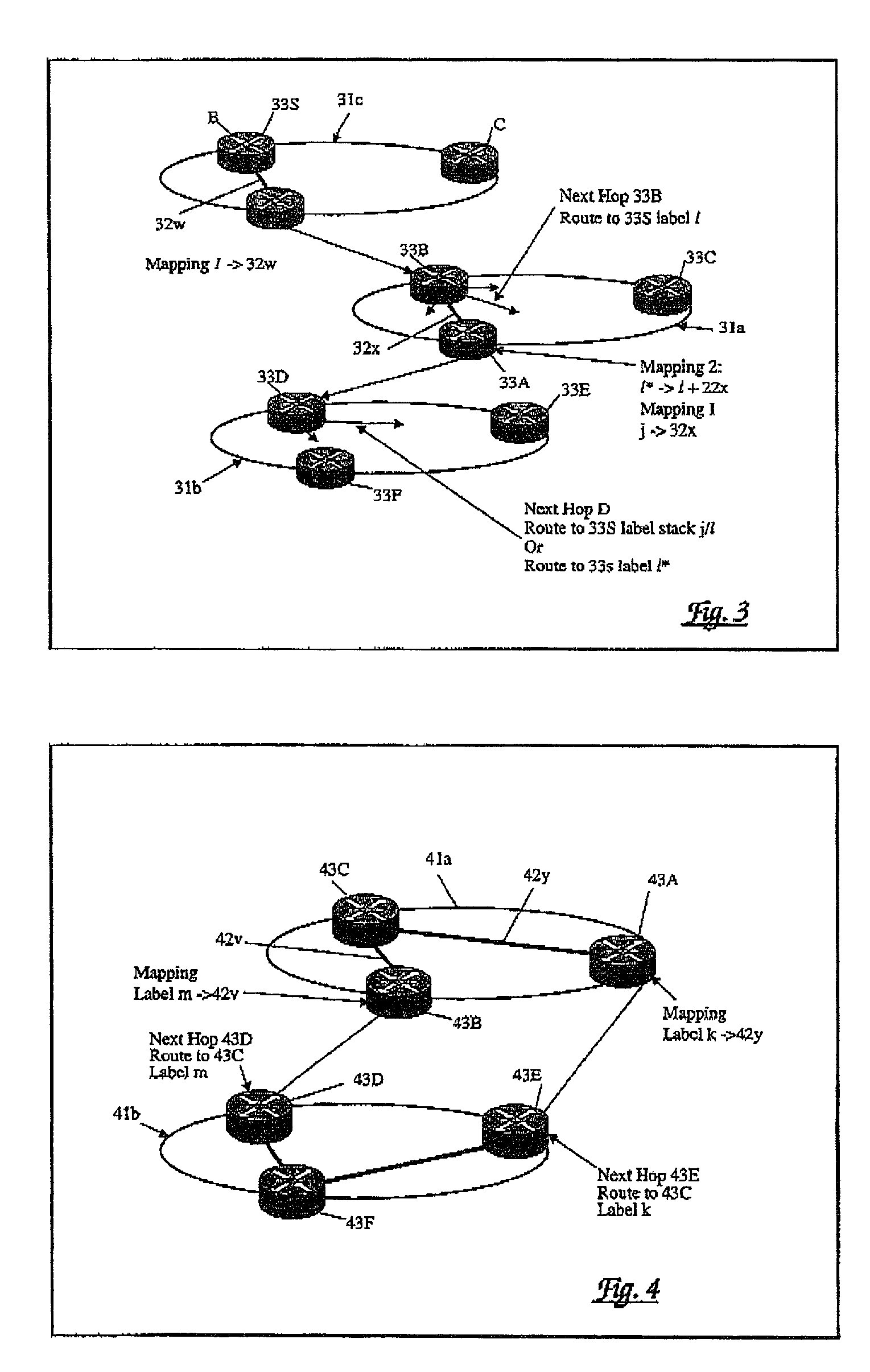Routing traffic in a communications network
a technology for routing traffic and communications networks, applied in data switching networks, digital transmission, data switching by path configuration, etc., can solve problems such as negating some benefits and adding to the complexity of the system
- Summary
- Abstract
- Description
- Claims
- Application Information
AI Technical Summary
Benefits of technology
Problems solved by technology
Method used
Image
Examples
Embodiment Construction
[0025] Referring now to FIG. 2, this shows a network arrangement comprising first (21a) and second (21b) autonomous systems within each of which label switched paths 22x, 22y, 22z are-established for the routing of packets within that autonomous system. It will be appreciated that for simplicity, and for the purpose of explanation, only two linked autonomous systems are shown and only a small number of routers 23A to 23C and 23D to 23F are shown in each respective autonomous system.
[0026] In the network arrangement of FIG. 2, a border gateway protocol (BGP) is employed in which a BGP label identifies both a forwarding interface for a packet and a forwarding behaviour at that interface so as to provide a mapping on to an appropriate label switched path.
[0027] BGP, as noted above, is used to notify one autonomous system of the available routes to destinations on an adjacent autonomous system. This route information is encoded in a network layer reachability information (NLRI) element ...
PUM
 Login to View More
Login to View More Abstract
Description
Claims
Application Information
 Login to View More
Login to View More - R&D
- Intellectual Property
- Life Sciences
- Materials
- Tech Scout
- Unparalleled Data Quality
- Higher Quality Content
- 60% Fewer Hallucinations
Browse by: Latest US Patents, China's latest patents, Technical Efficacy Thesaurus, Application Domain, Technology Topic, Popular Technical Reports.
© 2025 PatSnap. All rights reserved.Legal|Privacy policy|Modern Slavery Act Transparency Statement|Sitemap|About US| Contact US: help@patsnap.com



